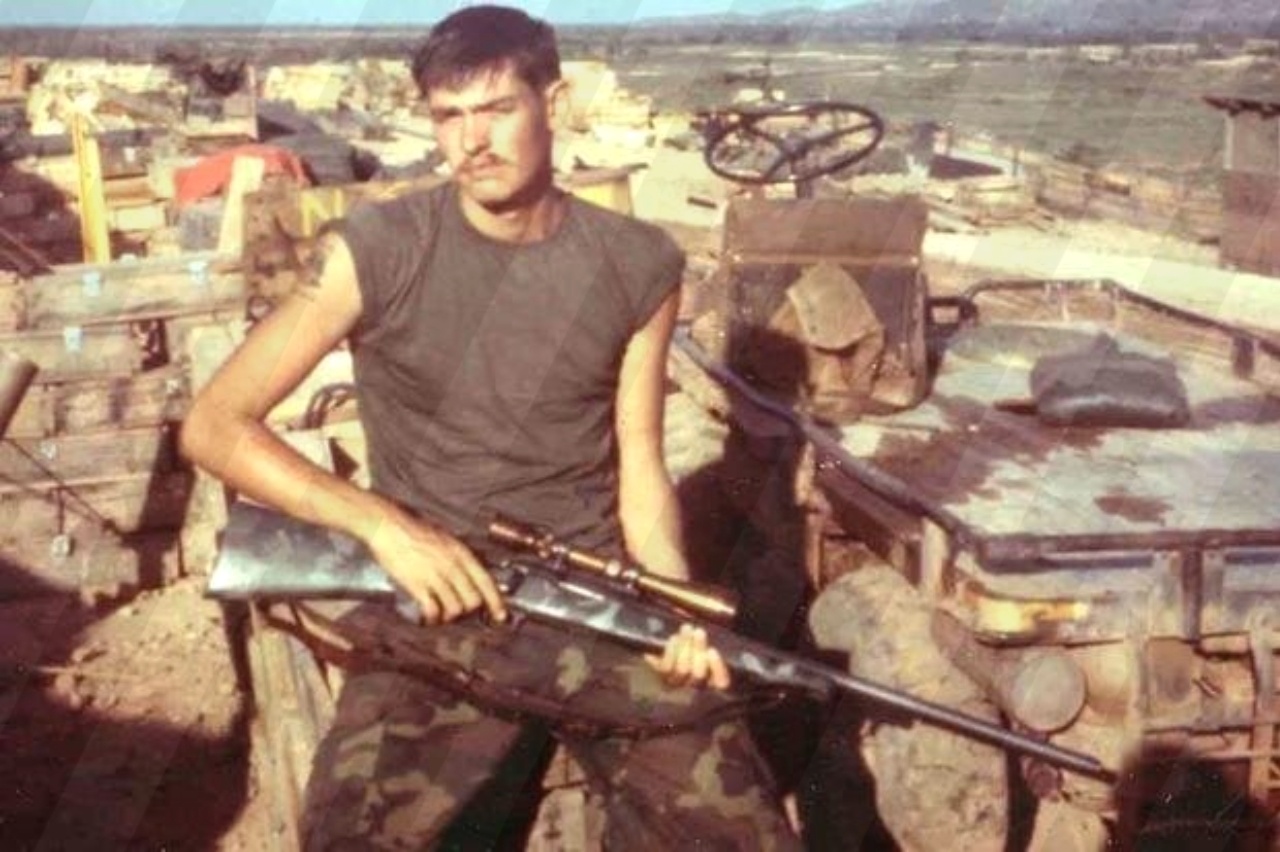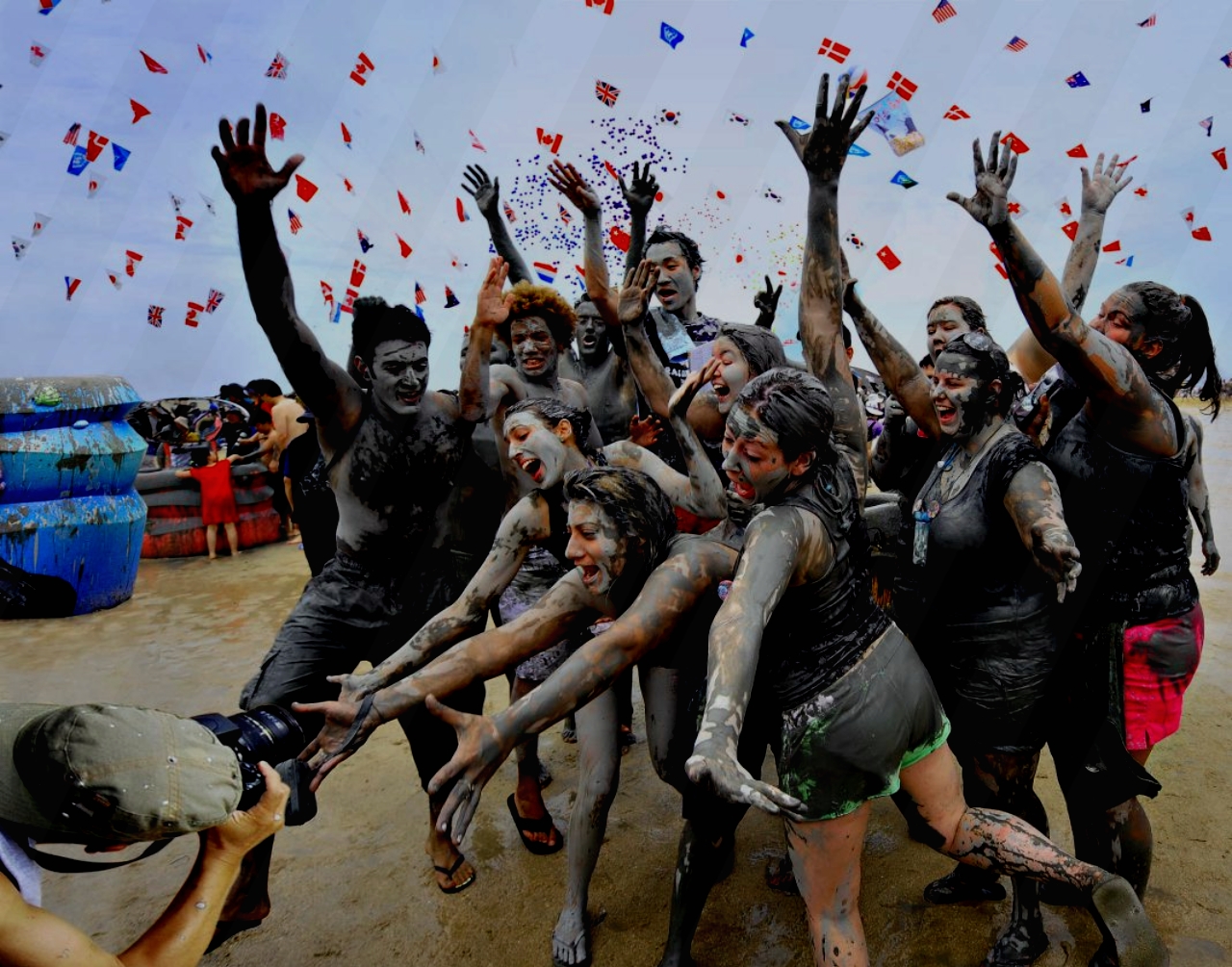The emergence of modern snipers dates back to the late nineteenth century, notably during the American Civil War. Although not yet termed ‘snipers’, sharpshooters played pivotal roles for both Union and Confederate forces, albeit in a limited capacity. Their significance would evolve significantly by the turn of the century, leveraging advancements in weaponry and tactics to expand their operational scope.
Over time, snipers have become formidable assets on the modern battlefield, often achieving kill counts comparable to heavier units like artillery and tanks. Targeting high-value and strategic objectives, history’s deadliest snipers have profoundly influenced major conflicts spanning from the brutal battles on the Eastern Front of World War II to recent large-scale engagements against ISIS.
1. Charles Mawhinney, 103 Kills
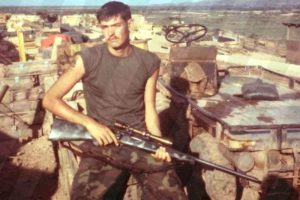
Charles Mawhinney, born in 1949 in Lakeview, Oregon, earned his reputation as one of the most lethal snipers in the history of warfare during the Vietnam War. Trained at the Scout Sniper School in Camp Pendleton, California, Mawhinney deployed to Vietnam in 1968 during one of its most intense phases.
Initially serving as a scout sniper across various units, Mawhinney later joined Delta Company, where he distinguished himself. Accounts from his peers suggest that Mawhinney’s official tally of 103 kills may significantly understate his actual prowess, with some estimating his total kills to exceed 300. One notable engagement saw Mawhinney eliminate 16 North Vietnamese Army soldiers with precise headshots within a remarkable span of just 30 seconds.
2. Josef Allerberger, 257 kills
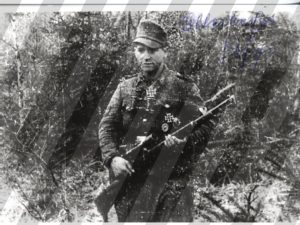
Josef Allerberger began his military career as a German machine-gunner on the Eastern Front in September 1943. However, he quickly discovered his exceptional talent with sniper rifles amidst the challenging conditions following Germany’s defeat at Stalingrad. Despite the overall deteriorating situation for the Germans, particularly against skilled Soviet snipers, Allerberger distinguished himself by significantly impeding the Red Army’s advance in his sector.
With an impressive tally of at least 257 confirmed kills, Allerberger earned a reputation as one of the deadliest soldiers in the Wehrmacht. He developed innovative tactics to maximize his impact on the battlefield, such as targeting soldiers from behind to sow confusion and disrupt Soviet attacks. Renowned for his resourcefulness, Allerberger often used a cleverly camouflaged umbrella made from local foliage, allowing him to operate covertly deep within enemy territory. These tactics not only showcased his skill but also underscored his adaptability and effectiveness in combat situations.
3. Vasily Zaytsev, 225+ kills
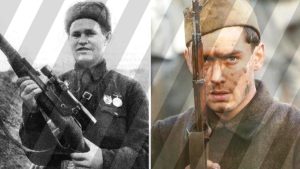
The Battle of Stalingrad, fought on the Eastern Front during World War II, stands out as one of the largest and deadliest conflicts in history. Set amidst dense urban terrain, it became a deadly arena where highly skilled snipers from Nazi Germany and the Soviet Union clashed fiercely. Over five months, both sides poured millions of troops into the city in a desperate struggle.
Among them, Soviet snipers notably dominated the battlefield, contributing significantly to the ultimate defeat of the German forces at Stalingrad. Vasily Grigoryevich Zaytsev emerged as a legendary figure in this brutal theater of war. In less than five weeks alone, Zaytsev achieved over 225 kills, including taking down 11 elite German snipers, making him one of the deadliest adversaries of the Nazis throughout the entire war. Some reports even credit him with a total of around 400 kills, a testament to his exceptional marksmanship and tactical prowess.
Zaytsev’s remarkable achievements earned him the prestigious Hero of the Soviet Union medal. Even after the war, he remained a revered figure in Soviet Russia, with many of his innovative sniper techniques continuing to influence and inspire Russian sniper units to this day in active combat situations.
4. Billy Sing, 200+ kills
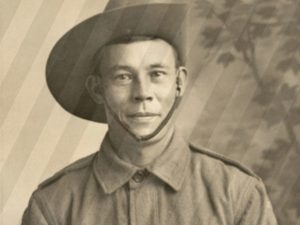
When William “Billy” Sing enlisted to fight in the First World War, he never anticipated becoming one of the conflict’s most celebrated snipers, possibly even in history. Serving with the Australian Imperial Force, Sing was deployed to the challenging Gallipoli front in May 1915, where Turkish snipers posed a significant threat to Allied forces from New Zealand and Australia due to their intimate knowledge of the terrain.
Born in 1886 in rural Queensland, Australia, Sing had grown up immersed in a culture of guns and horsemanship, honing his skills in both by the time he joined the military. By October 1915, Sing had achieved a confirmed tally of at least 201 Ottoman soldiers killed, although some accounts suggest his actual count could be much higher. His exceptional marksmanship earned him several nicknames among ANZAC soldiers, including “the assassin” and “the murderer.”
5. Lyudmila Pavlichenko, 309 kills
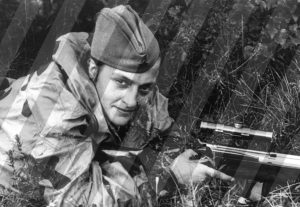
When Germany launched its invasion of the Soviet Union in June 1941, Lyudmila Pavlichenko was among the Soviet citizens who volunteered to defend their homeland. A scholar and teacher-in-training at Kiev University, Pavlichenko’s proficiency with a rifle from her time at a local sniper school would soon be put to the test on the front lines. Her exceptional marksmanship earned her the fearsome nickname “Lady Death” from the Germans.
Throughout the war, Pavlichenko recorded at least 309 kills of Axis soldiers, including 36 enemy snipers. Initially deployed in the Odessa region, she was soon relocated to Sevastopol on the Crimean Peninsula as the front lines shifted rapidly. It was during the prolonged defense of Sevastopol, where the German forces significantly outnumbered the Soviet defenders, that Pavlichenko achieved most of her kills. Despite the eventual fall of the city after 250 days of intense combat, the heroic efforts of Pavlichenko and her fellow Soviet fighters dealt a severe blow to the German war effort in the Eastern Front.
6. Francis Pegahmagabow, 378 kills

During World War I, the modern sniper emerged as a formidable force on the battlefield, armed with advanced weapons like bolt action rifles and telescopic sights. These sharpshooters played a crucial role in the trench warfare of the era, particularly during the initial stages of the conflict when their effectiveness was unmatched.
Among the most lethal of these snipers was Francis Pegahmagabow, a member of the Ojibwa First Nations clan from Parry Island, Ontario, Canada. Serving in the Canadian Expeditionary Force, Pegahmagabow distinguished himself as a scout and sniper, often operating in the perilous No Man’s Land between opposing trenches. Despite suffering severe lung damage from a chlorine gas attack during the Second Battle of Ypres, he continued his deadly work and amassed an impressive tally of 378 confirmed enemy kills by the time he was hospitalized with pneumonia in 1917.
7. Simo Hayha, 542 kills
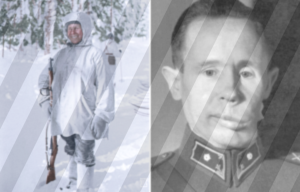
The Soviet Union invaded Finland in November 1939, initiating the brutal Winter War that resulted in the deaths of hundreds of thousands. By the war’s end in March 1940, the USSR had made some territorial gains, but the conflict is remembered for the fierce resistance put up by the Finns, who inflicted heavy casualties on the Soviets—more than 126,000 Soviet soldiers lost their lives compared to around 26,000 Finnish casualties.
One of the enduring symbols of Finnish resistance was Simo Häyhä, a farmer-turned-soldier who holds the record for the highest number of sniper kills in modern warfare history. Over the course of just 98 days, Häyhä killed 542 Soviet soldiers, earning himself the moniker ‘The White Death’. Unlike many other snipers, Häyhä achieved his remarkable tally using a standard M/28-30 rifle without any telescopic sights. Although a basic weapon even for its time, Häyhä had honed his marksmanship through years of hunting in the Finnish wilderness.
8. Matthäus Hetzenauer, 345 kills
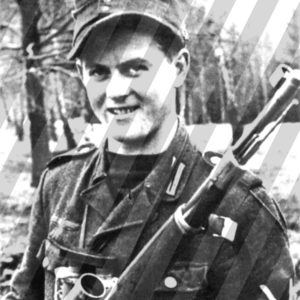
Matthäus Hetzenauer was deployed in Central Europe in 1944 as part of the Wehrmacht’s 3rd Mountain Division. During this critical period, German forces were focused on slowing the rapid Soviet advance towards Berlin, with Hitler deploying elite units to stabilize the Eastern Front.
Originally trained as a mountain infantryman, Hetzenauer’s superiors quickly recognized his exceptional skills as a sniper. He soon became the deadliest German sniper on the Eastern Front, achieving at least 345 confirmed kills of Red Army soldiers within a few months. His accuracy and impact were such that he earned the Iron Cross, a recognition of his significant contributions to the German war effort.
However, the symbolism of the Iron Cross has evolved over time, now carrying negative connotations in many contexts. Regardless, Matthäus Hetzenauer fulfilled his duties with utmost effectiveness until a head injury forced him off active duty. He was subsequently captured by Soviet forces in May 1945, marking the end of his military service during World War II.
9. Ivan Sidorenko, 500 kills
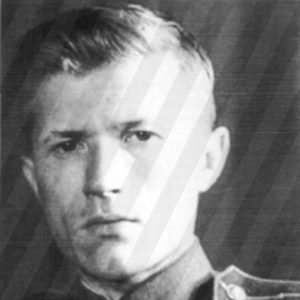
Ivan Sidorenko began his military service in 1939, joining the Red Army to defend against the German invasion that swept across Russia. Assigned initially to a mortar unit during the pivotal Battle of Moscow in 1941, Sidorenko spent his downtime honing his sniper skills, using a standard-issue Mosin-Nagant rifle to pick off unsuspecting German soldiers. Over the next three years, his tally of confirmed kills reached an astonishing 500, solidifying his reputation as one of the deadliest snipers in history.
Recognizing his exceptional abilities, Sidorenko was reassigned from his mortar duties to train and mentor new snipers on the Eastern Front. He dedicated himself to teaching more than 250 Red Army soldiers the art of precision shooting until he was seriously wounded in combat in 1944.
10. Vasily Shalvovich, 534 kills

Before the German invasion of Soviet Russia, Vasily Shalvovich worked on a collective farm in the Georgian SSR. Although he had a brief stint in the Red Army from 1932 to 1933, it was during the Second World War that he truly excelled as a sniper. By June 1942, Shalvovich’s exceptional marksmanship earned him a position as a sniper in the 138th Infantry Division, deployed to the fierce battlegrounds of Stalingrad.
By the war’s end, Shalvovich had recorded at least 534 kills of Nazi soldiers, establishing him as the most successful Soviet sniper of the conflict. A significant portion of his kills—about 215—were achieved between June and December 1944, during his deployments across various fronts including Kerch, Stalingrad, Belarus, Lithuania, Latvia, Poland, and Germany.


